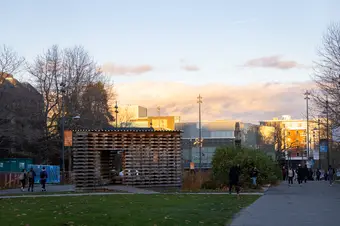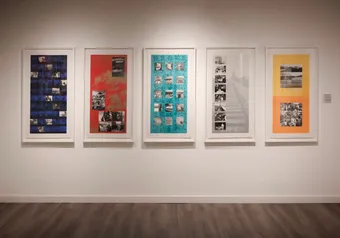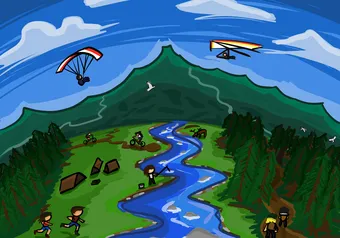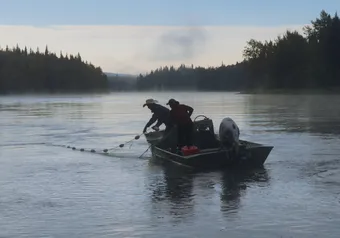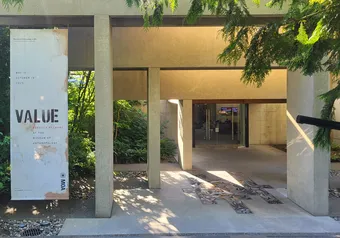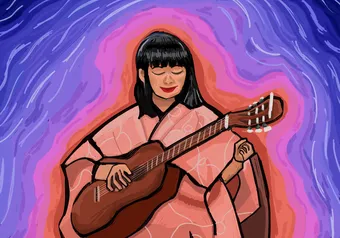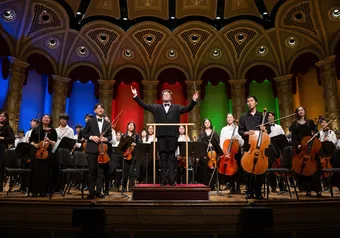UBC’s Point Grey Campus has been evolving for over a century, and its visual landscape runs the gamut of styles. One can go from Buchanan’s 1970’s brutalist complex into the Nest’s lofty steel and glass quickly enough to get architectural whiplash. Campus tours stroll through a traditional Japanese garden at the Nitobe Memorial, then take a right and pass a bust of poet Rabindranath Tagore on their way to the Haida Reconciliation pole on Main Mall. All speak to historic relationships at UBC and represent segments of UBC's current community.
All this to say that public art matters. It’s important, then, that any efforts at redesigning and expanding UBC give public art its due consideration in the planning process.
Enter Campus Vision 2050. Since September 2021, UBC’s effort to draft a thirty year plan for campus has made transparency and engagement with the community a core tenet. Their next engagement period began on January 25, and includes several workshops through February. But, does that extend to public art?
Campus Vision deals with "the broad strokes for future change,” said Associate Vice President of Campus and Community Planning Michael White. “[We’re having] community discussions around what people would like to see… Some of the comments relate to art and expression on campus.”
While Campus Vision 2050 primarily deals with the bigger picture — including expanding the Skytrain to UBC and anticipating thousands of new campus residents — architectural design and other forms of art will certainly be part of the outcome.
One of the 'big ideas' of Campus Vision is creating new public spaces, like the Nest or IKB, to connect campus’s expanding communities. These new spaces could serve as prime candidates for expanding public art at UBC.
In my opinion, a shift in vision towards integrating public art into communal space could be a breath of fresh air. While explicitly aesthetic works of sculpture have their place, incorporating art into campus buildings and walkways more subtly through the design of the structures themselves would not only catch the eye, but also enhance UBC's overall aesthetics.
Esther Shalev-Gerz’s pavement mosaic The Shadow, for example, sprawls across the courtyard outside the Nest. Rather than sticking out to passersby as an obvious statement, these works take a more subtle approach and complement the existing structures around campus.
UBC’s Campus Public Art Strategy currently focuses on public art that is more aesthetic than functional, such as “landmark sculptural works [and] temporary installations,” said Cole, but other forms of art may be just as desirable in future expansions.
With this in mind, I asked UBC students what kind of art they would like to see in these new locations.
“[I’d like to see] longer descriptions placed by the art for people interested in [learning about] it,” said third-year student Adam McNeice. An example of this can be found in and around the Museum of Anthropology, where many of the outdoor exhibits are accompanied by plaques.
Representation also poses a vital question in any discussion of public art. UBC’s public art should reflect the voices and identities of a community including an international student population of 28 per cent, located in a culturally-diverse city on Indigenous land.
White stressed Musqueam involvement as one of the core focuses of Campus Vision 2050 — something that has been codified in UBC’s Campus Public Art Strategy since 2018.
“We’ve been working with representatives from Musqueam… and conducted a number of community discussions and community events… [to determine] what’s important to the Musqueam community in Campus Vision 2050," said Cole.
Barbara Cole, the curator of outdoor art for the Belkin gallery on campus, also spoke to the importance of Indigenous, and specifically Musqueam, representation in art on campus.
“One of the biggest questions that we face [at the Belkin] is how do you invite artists to produce art on ancestral and unceded territory… We’re really trying to think of ways that we can increase [the] visibility [of Musqueam culture] on campus.”
As an example, she talked about an upcoming addition to UBC’s reconciliation pole, the main structure of which was raised in 2017 and was carved by Haida Hereditary Chief 7idansuu James Hart. A large bronze disk will be added to the pole’s base carved by Musqueam artist Richard Campbell. The disk is scheduled for installation in February.
Campus Vision 2050 is not at the stage of drafting any specific plans for public art in particular, but we can expect to see further canvassing of the UBC community in the new year for input on the future of the Point Grey Campus.
If you feel that public art deserves to be an important part of this conversation, it’s up to you to make it one.
First online
Share this article


